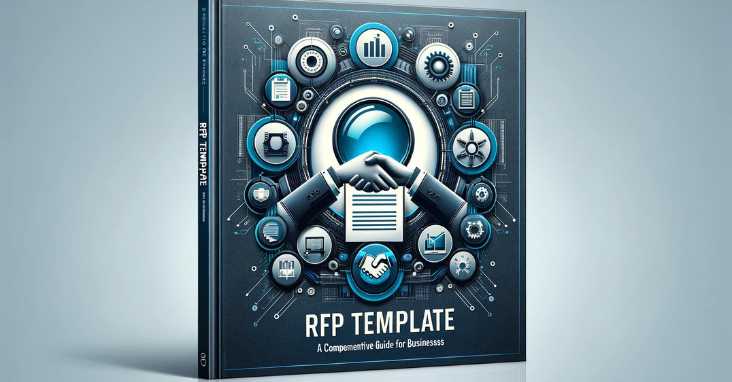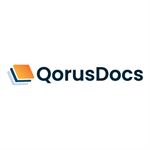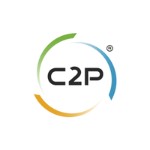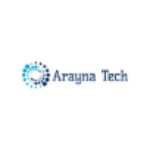What is a RFP Template? An RFP Template is a pre-designed framework used by businesses to request proposals from potential suppliers or service providers.
An RFP (Request for Proposal) is a document that organizations use to solicit proposals from potential vendors for products or services they need. RFPs can be complex and time-consuming to create, but they are essential for ensuring that organizations receive the best possible proposals from vendors.

To create an effective RFP, organizations must understand the purpose of the document and the information that should be included. A well-structured RFP template can help ensure that all necessary information is included and that the document is easy to read and understand.
In this article, we will explore the importance of RFP templates and how they can be used to create effective RFPs. We will discuss the structure of an RFP template, best practices for writing an RFP, and tips for managing the RFP process. By the end of this article, readers will have a better understanding of how to create an RFP that will attract the best possible proposals from vendors.
Key Takeaways
- Understanding the purpose of an RFP is essential for creating an effective document.
- Using an RFP template can help ensure that all necessary information is included and that the document is easy to read and understand.
- Best practices for writing an RFP include clearly defining requirements, providing detailed instructions, and setting a realistic timeline for the vendor selection process.
Understanding RFPs
What Is an RFP?
An RFP, or Request for Proposal, is a document that businesses use to solicit proposals from vendors for products or services they need. It is a formal process that allows businesses to compare and evaluate different proposals from various vendors.
The RFP typically includes a detailed description of the project or service required, along with the criteria that will be used to evaluate the proposals. It may also include information on the budget, timeline, and other requirements.
The Purpose of RFPs
The primary purpose of an RFP is to help businesses identify the best vendor for their needs. By soliciting proposals from multiple vendors, businesses can compare and evaluate different options, and choose the one that best meets their requirements.
RFPs also help to ensure that vendors understand the requirements of the project or service, and that they are able to provide a proposal that meets those requirements. This can help to avoid misunderstandings and ensure that the project or service is completed successfully.
Overall, RFPs are an important part of the procurement process for businesses, as they allow them to identify the best vendor for their needs and ensure that their projects or services are completed successfully.
For more information on RFPs, check out this resource from Inc. magazine.
Preparing Your RFP
When preparing an RFP, it is important to take the time to define project goals, scope of work, budget considerations, timeline, and milestones. This will help ensure that the RFP is clear and concise, and that all parties involved have a clear understanding of what is expected.
Defining Project Goals
The first step in preparing an RFP is to define the project goals. This includes identifying the purpose of the project, the desired outcomes, and any specific requirements or constraints. It is important to be as specific as possible when defining project goals, as this will help ensure that the RFP is targeted to the right vendors and that responses are relevant.
Scope of Work
Once project goals have been defined, the next step is to define the scope of work. This includes identifying the tasks that need to be completed, the resources required, and any specific deliverables that are expected. It is important to be clear and concise when defining the scope of work, as this will help ensure that vendors have a clear understanding of what is expected and can provide accurate responses.
Budget Considerations
Budget considerations are an important part of any RFP. It is important to be clear about the budget for the project, including any constraints or limitations. This will help ensure that vendors are able to provide accurate responses and that the project stays within budget.
Timeline and Milestones
Finally, it is important to define the timeline and milestones for the project. This includes identifying key dates and deadlines, as well as any specific milestones that need to be achieved. It is important to be realistic when setting timelines and milestones, as this will help ensure that the project stays on track and is completed on time.
When preparing an RFP, it is important to be clear and concise about project goals, scope of work, budget considerations, timeline, and milestones. By taking the time to define these key elements, you can help ensure that the RFP is targeted to the right vendors and that responses are relevant. For more information on preparing an RFP, please visit this resource, which provides a comprehensive guide to the RFP process.
RFP Template Structure
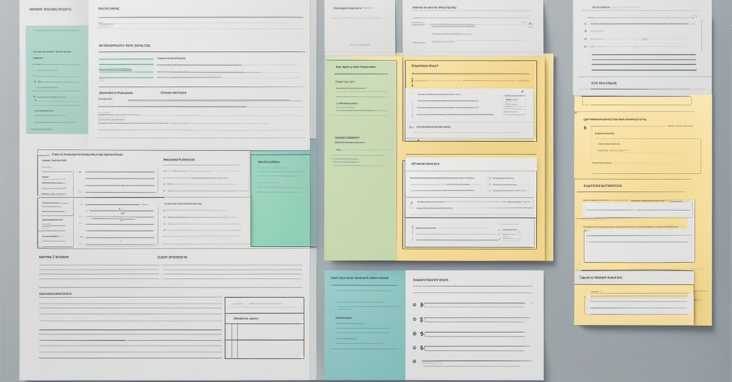
When creating an RFP document, it is important to follow a structured format that covers all the necessary information. A well-structured RFP template helps to ensure that vendors understand the requirements and can submit proposals that meet the criteria. The following subsections are commonly included in an RFP template:
Cover Page
The cover page of an RFP template typically includes the name of the organization issuing the RFP, the RFP title, the date of issuance, and the deadline for submissions. It may also include a brief description of the project or scope of work.
Executive Summary
The executive summary provides a brief overview of the project, including the goals, objectives, and expected outcomes. It is usually one to two pages in length and should be written in a clear and concise manner.
Background Information
The background information section provides context for the project and outlines any relevant history or previous work that has been done. This section should also include information about the organization issuing the RFP and any specific requirements or constraints that must be considered.
Detailed Specifications
The detailed specifications section is the core of the RFP document and outlines the specific requirements and criteria that vendors must address in their proposals. This section should be structured in a clear and organized manner, using tables, lists, and other formatting tools to make the information easy to understand.
Submission Guidelines
The submission guidelines section outlines the process for submitting proposals, including the deadline, format, and any specific requirements for formatting or content. This section should also provide information about how proposals will be evaluated and any other relevant information about the selection process.
When creating an RFP template, it is important to ensure that all necessary information is included and that the document is easy to read and understand. Using formatting tools such as tables and lists can help to make the information more accessible, and including clear guidelines for submissions can help to ensure that vendors submit proposals that meet the criteria. For more information on creating effective RFP templates, check out this resource.
Writing an Effective RFP
When writing a Request for Proposal (RFP), it is essential to create a document that is clear, concise, and transparent. An effective RFP should provide vendors with all the necessary information they need to submit a proposal that meets the project requirements. Here are some tips for writing an effective RFP.
Clear Requirements
One of the most important aspects of an RFP is to provide clear requirements. The RFP should outline the project’s objectives, scope, timeline, and budget. The requirements should be specific and measurable, so vendors can determine if they are capable of delivering the project. It is also a good idea to include any mandatory requirements, such as certifications or specific technologies.
Concise Project Description
The project description should be brief and to the point. It should provide vendors with a clear understanding of the project’s purpose and goals. The description should also include any constraints or limitations that may impact the project’s delivery. It is important to avoid using technical jargon or acronyms that may be unfamiliar to vendors.
Transparency in Expectations
Transparency is critical when writing an RFP. Vendors need to understand the evaluation criteria and the process for selecting the winning proposal. It is also important to provide vendors with a clear understanding of the project’s risks and challenges. This will help vendors to develop a proposal that is realistic and achievable.
When writing an RFP, it is important to remember that the document is a reflection of the organization. A well-written RFP can attract high-quality vendors and lead to a successful project delivery.
For more information on writing an effective RFP, check out this resource by Inc.
Vendor Selection Process

When it comes to selecting a vendor for a project, it is crucial to have a well-defined selection process. This helps to ensure that the vendor selected is the right fit for the project and can deliver the desired results. The vendor selection process typically involves three main stages: evaluation of vendors, qualification requirements, and vendor questions.
Evaluation Criteria
Evaluation criteria are the standards used to assess vendors and determine their suitability for the project. These criteria are usually based on factors such as experience, expertise, track record, and pricing. It is important to establish clear and objective evaluation criteria to ensure fairness and transparency in the selection process.
One useful resource for developing evaluation criteria is the RFP template provided by the National Institute of Standards and Technology (NIST). This template includes a section on evaluation criteria that can be customized to suit the specific needs of the project. Click here to access the NIST RFP template.
Qualification Requirements
Qualification requirements are the minimum standards that vendors must meet to be considered for the project. These requirements typically include factors such as experience, certifications, financial stability, and references. Qualification requirements help to ensure that only qualified vendors are considered for the project.
It is important to establish clear and objective qualification requirements to ensure that all vendors are evaluated fairly. One way to do this is to use a checklist that includes all the necessary qualification requirements. This can help to ensure that all vendors are evaluated against the same standards.
Vendor Questions
Vendor questions are the questions that vendors are asked during the selection process. These questions are designed to help evaluate the vendor’s capabilities, experience, and fit for the project. It is important to ask the right questions to ensure that the vendor selected is the right fit for the project.
One useful resource for developing vendor questions is the RFP template provided by the Project Management Institute (PMI). This template includes a section on vendor questions that can be customized to suit the specific needs of the project. Click here to access the PMI RFP template.
By following a well-defined vendor selection process that includes clear evaluation criteria, qualification requirements, and vendor questions, organizations can increase their chances of selecting the right vendor for their project.
RFP Management

Managing an RFP process can be a daunting task, especially when dealing with multiple vendors and their responses. Effective RFP management requires a well-structured approach that includes tracking responses and negotiating with vendors to finalize the deal.
Tracking Responses
One of the most critical aspects of RFP management is tracking vendor responses. This involves keeping track of all the submissions and ensuring that they meet the requirements outlined in the RFP. RFP software can be helpful in managing this process, as it can provide a centralized location for all the submissions and facilitate collaboration among team members.
Project management tools can also be useful in tracking responses, as they provide a way to assign tasks, set deadlines, and monitor progress. By using these tools, project managers can ensure that the RFP process stays on track and that all stakeholders are kept informed of progress.
Negotiation and Finalization
Once all the responses have been received and evaluated, the negotiation process can begin. This involves negotiating with vendors to finalize the deal and reach an agreement that satisfies both parties. Negotiation skills are essential in this process, as they can help to ensure that the best deal is reached.
Submissions and the bidding process can be complex, so it’s important to have a clear understanding of the terms and conditions of the RFP. This can help to avoid misunderstandings and ensure that the final agreement is fair and equitable for all parties involved.
To help ensure a successful negotiation and finalization process, it’s essential to have a clear plan and strategy in place. This can include setting clear objectives, identifying potential areas of compromise, and establishing a timeline for the negotiation process.
Overall, effective RFP management requires a well-structured approach that includes tracking responses and negotiating with vendors to finalize the deal. By using RFP software and project management tools, project managers can ensure that the process stays on track and that all stakeholders are kept informed of progress. For more information on RFP management, check out this resource.
Legal and Contractual Information
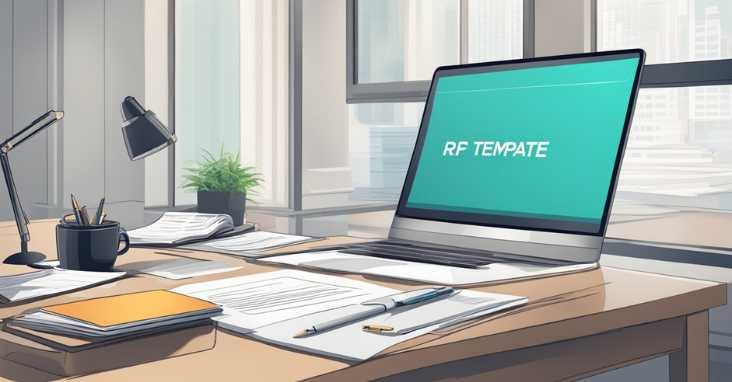
Terms and Conditions
When creating a Request for Proposal (RFP) template, it is crucial to include a section on the terms and conditions of the contract. This section outlines the legal obligations and responsibilities of both parties, and it is essential to ensure that all parties understand their obligations before signing the contract.
The terms and conditions section should include information on the payment schedule, delivery dates, warranties, and liability. It should also outline the process for dispute resolution and termination of the contract.
To ensure that the terms and conditions are clear and enforceable, it is recommended that the RFP template includes a section on legal language. This section should include definitions of key terms, such as “force majeure” and “indemnification,” and should be written in clear and concise language.
Contractual Obligations
The contractual obligations section of the RFP template outlines the specific obligations of each party under the contract. This section should include information on the scope of work, deliverables, and timelines.
To ensure that the contractual obligations are clear and enforceable, it is recommended that the RFP template includes a section on performance standards. This section should outline the specific performance metrics that will be used to measure the success of the project.
When drafting the contractual obligations section, it is important to consider the legal implications of the contract. This section should be written in clear and concise language to avoid any misunderstandings or disputes.
It is crucial to ensure that the terms and conditions and contractual obligations sections of the RFP template are legally sound and enforceable. To help with this, it is recommended that the RFP template is reviewed by a legal professional before it is issued.
For more information on creating an effective RFP template, visit this article by Inc. Magazine.
Best Practices and Tips

RFP Checklists
When creating an RFP, it’s essential to have a checklist to ensure all necessary information is included. A checklist can help streamline the process and ensure that nothing is forgotten. Here are some items that should be on an RFP checklist:
- Clear and concise project description
- Detailed requirements and expectations
- Timelines and deadlines
- Evaluation criteria
- Contact information for the project manager or point of contact
- Budget and pricing information
- Any additional instructions or requirements
By including these items on the checklist, the RFP creator can ensure that all necessary information is included and that the RFP is comprehensive.
Common Pitfalls to Avoid
There are several potential roadblocks when creating an RFP. Here are some common pitfalls to avoid:
- Unclear or incomplete requirements: Be sure to provide detailed requirements and expectations to avoid confusion or misunderstandings.
- Vague evaluation criteria: Clearly outline the evaluation criteria to avoid any ambiguity.
- Inconsistent formatting: Use a consistent format throughout the RFP to make it easier to read and understand.
- Lack of communication: Be sure to communicate with potential vendors and answer any questions they may have to ensure they have all the information they need to submit a proposal.
By avoiding these common pitfalls, the RFP creator can ensure that the RFP is clear, concise, and comprehensive.
It’s also important to keep in mind some best practices when creating an RFP. One best practice is to provide a clear timeline and deadlines for vendors to submit their proposals. Another best practice is to be transparent about the evaluation process and criteria. By following these best practices and avoiding common pitfalls, the RFP creator can ensure that the RFP is effective and efficient.
For more information on creating an RFP, check out this resource from Inc. magazine.
Advanced RFP Strategies

When it comes to Request for Proposal (RFP) templates, there are a number of advanced strategies that organizations can employ to improve their chances of success. Here are two strategies that can help organizations achieve better results.
Leveraging Technology
One of the most important things that organizations can do to improve their RFP process is to leverage technology. This can involve using tools like RFP software to automate certain aspects of the process, such as document creation and distribution. It can also involve using collaboration tools to facilitate communication between team members and stakeholders.
By using technology to streamline the RFP process, organizations can save time and reduce errors. They can also improve collaboration and communication, which can lead to better outcomes.
Innovative Approaches to Collaboration
Another advanced strategy that organizations can use is to employ innovative approaches to collaboration. This can involve using tools like virtual whiteboards or project management software to facilitate collaboration between team members and stakeholders. It can also involve using agile methodologies to break down silos and increase collaboration across departments.
By using innovative approaches to collaboration, organizations can improve their ability to work together effectively. This can lead to better outcomes and more successful RFPs.
Overall, there are a number of advanced strategies that organizations can use to improve their RFP process. By leveraging technology and employing innovative approaches to collaboration, organizations can improve their chances of success and achieve better outcomes. For more information on RFP templates and strategies, check out this resource.
Frequently Asked Questions

How can I find a free RFP template for download?
There are several websites that offer free RFP templates for download. One such website is Smartsheet. Smartsheet offers a variety of RFP templates that you can download and customize to fit your specific needs. Another website that offers free RFP templates is TemplateLab. TemplateLab has a wide selection of RFP templates that you can download in various formats.
What are some examples of RFP documents?
RFP documents can vary depending on the industry and the specific project. However, some common examples of RFP documents include software development RFPs, construction RFPs, and marketing RFPs. Each of these RFP documents will have different requirements and sections.
What are the key elements to include when writing an RFP?
When writing an RFP, it is important to include the following key elements:
- Project overview
- Scope of work
- Timeline
- Budget
- Evaluation criteria
- Instructions for submitting a proposal
Including these key elements will ensure that your RFP is clear and comprehensive.
Is there a simple RFP template available in Word format?
Yes, there are several simple RFP templates available in Word format. One such template is available on Microsoft’s website. This template includes all the necessary sections for a basic RFP and can be easily customized to fit your specific needs.
Can I find RFP templates in Excel and PDF formats?
Yes, RFP templates are available in Excel and PDF formats as well. Many websites that offer RFP templates will have them available in multiple formats. For example, TemplateLab offers RFP templates in Word, Excel, and PDF formats.
What is the typical structure of an RFP document?
The typical structure of an RFP document includes the following sections:
- Introduction
- Project overview
- Scope of work
- Timeline
- Budget
- Evaluation criteria
- Instructions for submitting a proposal
However, the specific structure of an RFP document can vary depending on the industry and the project. It is important to tailor your RFP document to fit your specific needs.
Compare hundreds of Proposal Management Software in our Software Marketplace

